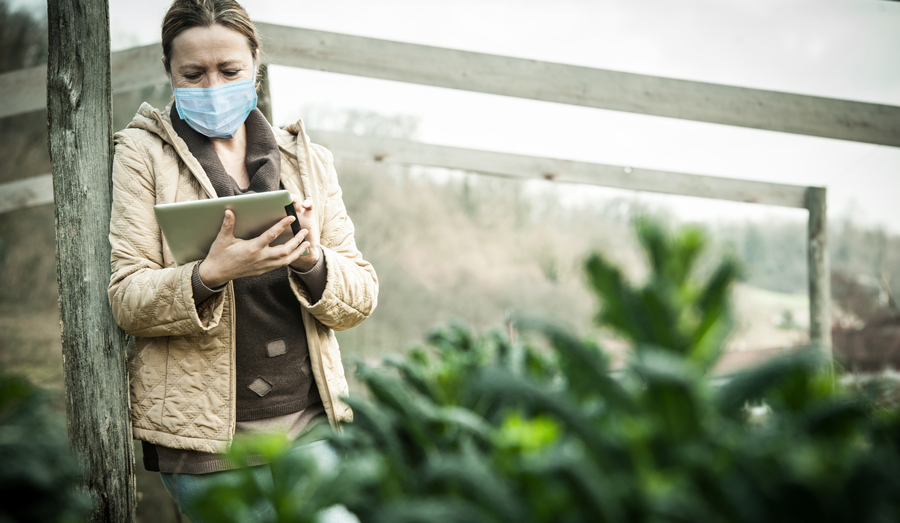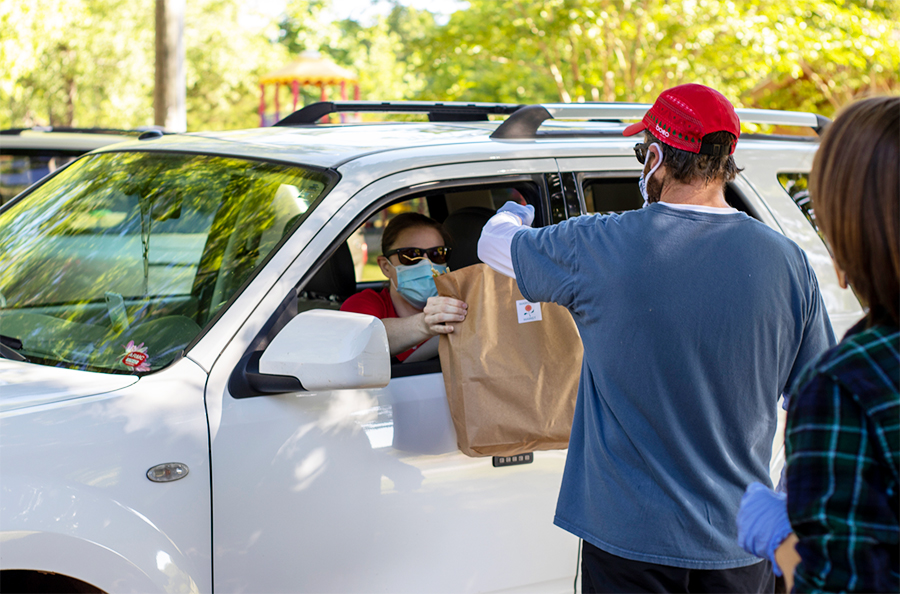If you're in the horticulture or agriculture industries, you understand that success in business takes determination and resilience—what we here at ICL like to call "grit." Year after year, growers and farmers like you overcome the uncertainties of nature, labor and global economies in your quest to succeed.
The worldwide impact of the COVID-19 pandemic is unprecedented in modern times. But businesses have responded to the challenge and seized the opportunity for positive change. From ornamental growers to agricultural producers to turf and landscape specialists, companies are pivoting and changing the ways they do business.
In many respects, this crisis has accelerated business shifts already underway. Your customers have discovered new ways of buying that they didn't realize they'd enjoy. Businesses that didn't think they could accommodate extra services discovered they could and should. And many businesses owners are learning that the "impossible" is possible after all.
These are just a few of the changes that are happening across business as a whole:
1. The move to online sales and real-time inventories
It wasn't long ago that many people in the plant business thought that internet-only plant sales would never happen. The houseplant craze—and nationwide e-commerce and single-plant shipments—changed that. Companies that invested in internet technologies for real-time inventories and online ordering hit the ground running when COVID-19 arrived.
GrowerTalks magazine told the story of one small garden retailer who had diligently been building up their website ordering the past few years. Pandemic restrictions pushed them to expand their plans quickly. Their March sales jumped 54% over last year.

2. The rise of webinars, internet calls and smartphone sales
Nothing beats seeing your favorite sales rep pull in or viewing greenhouse and nursery stock firsthand. But technology offers some close seconds. With just a smartphone and an application that supports video communication, you can hear and see almost anyone, anywhere. Even doctors' offices, right down to Mayo Clinic, have switched to internet web camera appointments.
3. The shift to virtual trade shows and conferences
Many spring and summer trade shows and conventions were sidelined by coronavirus restrictions. Some event companies simply postponed until later this year. Others, like California Spring Trials and the Farwest Show, canceled altogether and simple announced next year's dates. Still others, like AmericanHort's Cultivate'20, took the step to go virtual and present a full event schedule via the internet.
Across industries, many businesses report that virtual shows may be the wave of the future, even without the impact of COVID-19. Technology increasingly allows improved interaction for businesses—all without the expense of airfare, restaurants, and hotels.
Wholesalers are using webinars and internet meeting applications to provide product training for individual customers and seminar groups. Growers are taking customers on virtual walking tours of their fields and providing up-close plant inspections with cell phone photos and videos.
4. The new role of social media communication
Businesses on social media platforms such as Facebook, Instagram and LinkedIn have discovered customers are now communicating directly through those platforms. This trend isn't new. A year ago, one West Coast garden retailer told Garden Center magazine they had two full-time employees assigned solely to their social media pages. Their customers preferred social media communication over phone, email or text.
Businesses still thinking of social media as one-way communication or static pages may be missing sales opportunities on their doorstep. As younger generations enter horticulture and agriculture, meeting your customers where they're at increasingly points to social media.
5. The call for curbside pickup and just-in-time delivery
The pandemic's requirement to limit personal contact and on-site employees has expanded pickup and delivery options. Landscapers have used "curbside" pickup for years, when they'd swing into wholesalers for pre-pulled loads. But now that service has trickled down out to retail realms, and convenience-minded consumers approve.

In the same way, just-in-time delivery—where product arrives at the last possible moment to avoid availability gaps—has increased. The service reduces storage and labor needs, as employees transfer product straight from trucks to retail tables. Or, in the case of landscapers, to job sites right as crews arrive for work.
6. The case for remote workers and staggered hours
An April survey by Greenhouse Management magazine found that 31% of growers had employees working remotely due to COVID-19. Plus, 30% of you were integrating staggered work schedules. National sales teams for all types of businesses have worked from home offices for decades. But that's been the exception for local teams and staff.
Now, with mandatory work-from-home and staggered shifts, some businesses have realized flexible office arrangements can work. Several companies have announced sweeping changes, from permanent remote work for all employees to work-from-home rewards for high performers. Benefits to businesses include reduced rent for office space, improved employee satisfaction, and more.
Bottom line is that times have changed for businesses, and the changes aren’t over yet. At ICL, we're confident that the horticulture and agriculture industries will come out of this stronger, more efficient, and more effective on the other end—thanks to growers and farmers like you and the grit that drives us all to do and be our best.
